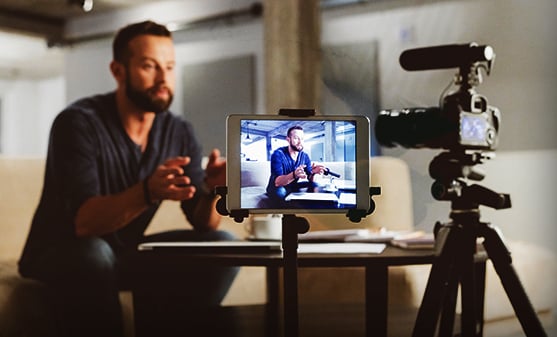A case study of a successful campaign

When Charli D’Amelio, the most followed creator on TikTok, announced her signature drink at Dunkin Donuts, the coffee giant’s Cold Brew sales spiked 45 percent (AdWeek). When Fyre Festival partnered with some of the hottest names in pop culture to promote their Bahamas-based music festival, ticket sales soared. A resounding success? Not exactly. Festival organizers couldn’t meet the demand their uber influencers generated and, failing to deliver on the luxury experience promised, faced millions of dollars in damages and jail time.
Influencer partnerships are not always a slam dunk, but they can be the critical missing piece to a comprehensive marketing strategy. After all, influencers are proven, powerful storytellers who know how to engage their audience. But today’s audiences know their value and don’t take insincerity lightly. Mikayla Nogueira has more than 14 million enthusiastic fans on TikTok, but they didn’t hesitate to call her bluff when she appeared to wear false eyelashes in a sponsored post for L’Oreal mascara.
The lesson for brands is to approach influencer marketing with cautious optimism. The right influencer can boost brand awareness, engagement and trust. Partnerships that are poorly matched, over saturated or insincere may fall short of achieving ROI or, in some cases, even hurt long-term product sales.
Before you decide to invest in influencer content partnerships, make sure you understand what influencers are (and what they are not), what role they can play in your campaign, and how to select the right partner for your brand.
INFLUENCERS DEFINED
When marketers use the term “influencers” today, they’re typically referring to social media influencers. According to the Digital Marketing Institute, social media influencers have established credibility, a large audience, and can persuade that audience to act based on their recommendations.
The influencer market is versatile and has the potential to take audiences through the full buyer journey from awareness (reach/amplification), to consideration (engagement), and eventually conversion (purchase and trial).
It is important to remember that there are many different types of influencers who can help you meet a variety of marketing objectives. A mega influencer with more than one million followers could help generate broad brand awareness among a diverse audience. On the other hand, a smaller, more niche influencer with anywhere between 5,000 and 100,000 followers can help build trust among a niche target audience, and their audiences are typically more active and engaged.
Brands can partner with influencers – usually for a fee or trade of some kind – to help communicate their brand messages to these audiences.
WHAT INFLUENCER PARTNERS DO
Before you make the case to the C-suite for including influencer partnerships in your brand budget, it’s important to understand what these partners can do for your brand, and what they typically will not. Perhaps most important is the realization that influencers are not walking advertisements. Brands do not always have full control over what the influencers say about their brand. This allows influencers to bring value to their audiences through authenticity.
Influencer marketing is also not public relations, or true earned media. While many influencers underscore their unwillingness to work with brands they don’t stand behind in their private lives, they also won’t support brands they do for free. In some cases, influencer marketing can be more cost effective than traditional targeted advertising. However, when working with mega influencers, the budget can quickly exceed traditional print or digital programmatic advertising budgets.
There are also many different types of partner content. Here are just a few:
HOW TO SELECT THE RIGHT PARTNER FOR YOUR BRAND
Brands with larger budgets may choose to engage an influencer marketing agency, which often have existing relationships and can source partners and assist your brand in coordinating influencer marketing campaigns. There are also subscription-based online databases for searching influencers using a variety of filters that are customizable to your campaign.
However, for many brands, the most cost-effective option for sourcing influencers is an old-fashioned manual search. Here are some techniques to get you started searching and vetting potential options:
Influencer marketing is hardly a new concept, but its dynamic nature means trends, platforms and pricing are always changing. It’s important to stay up to date on best practices and understand the current influencer landscape so you can make the most strategic decisions for your brand.
Stay tuned for an upcoming post on the big world of microinfluencers. In the meantime, check out this case study on our work with the Illinois Soybean Association, where we combined influencer partnership and a fabulous event to bring information about sustainable soybean practices to CPG companies.
To learn more about how influencer marketing could benefit your marketing strategy, contact our Business Development Director.
© 2024 Rhea + Kaiser. All rights reserved.